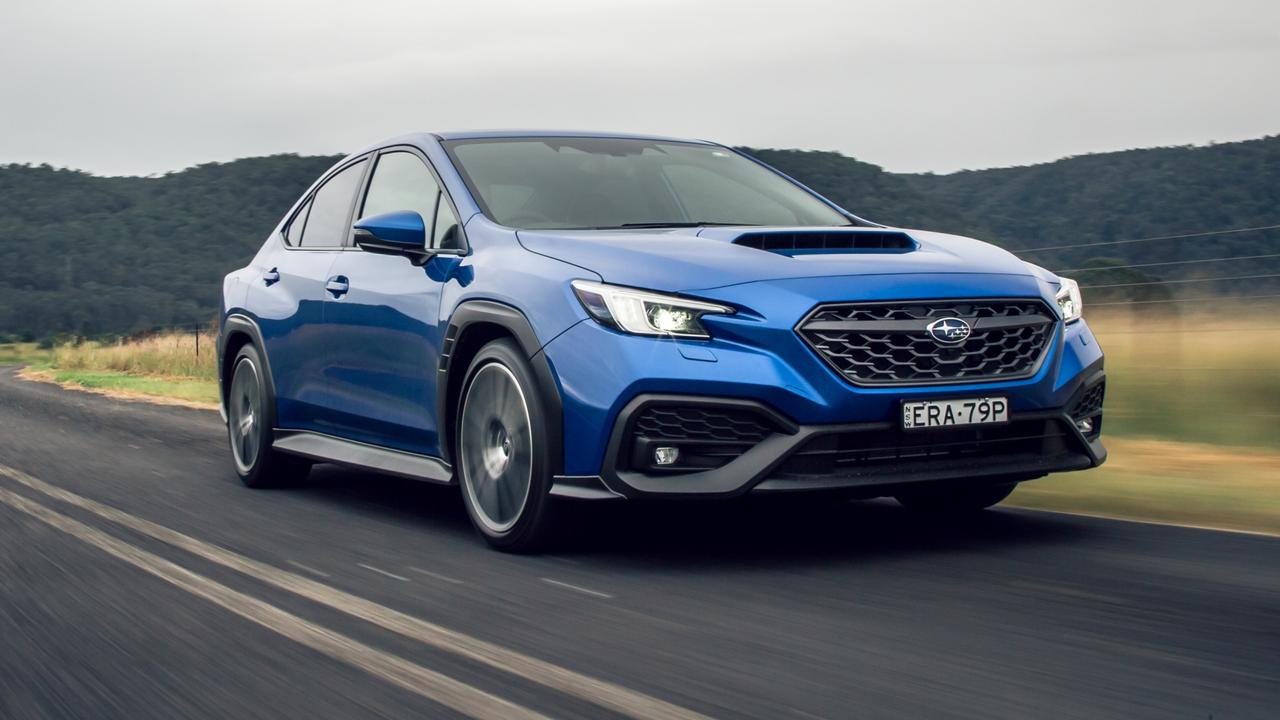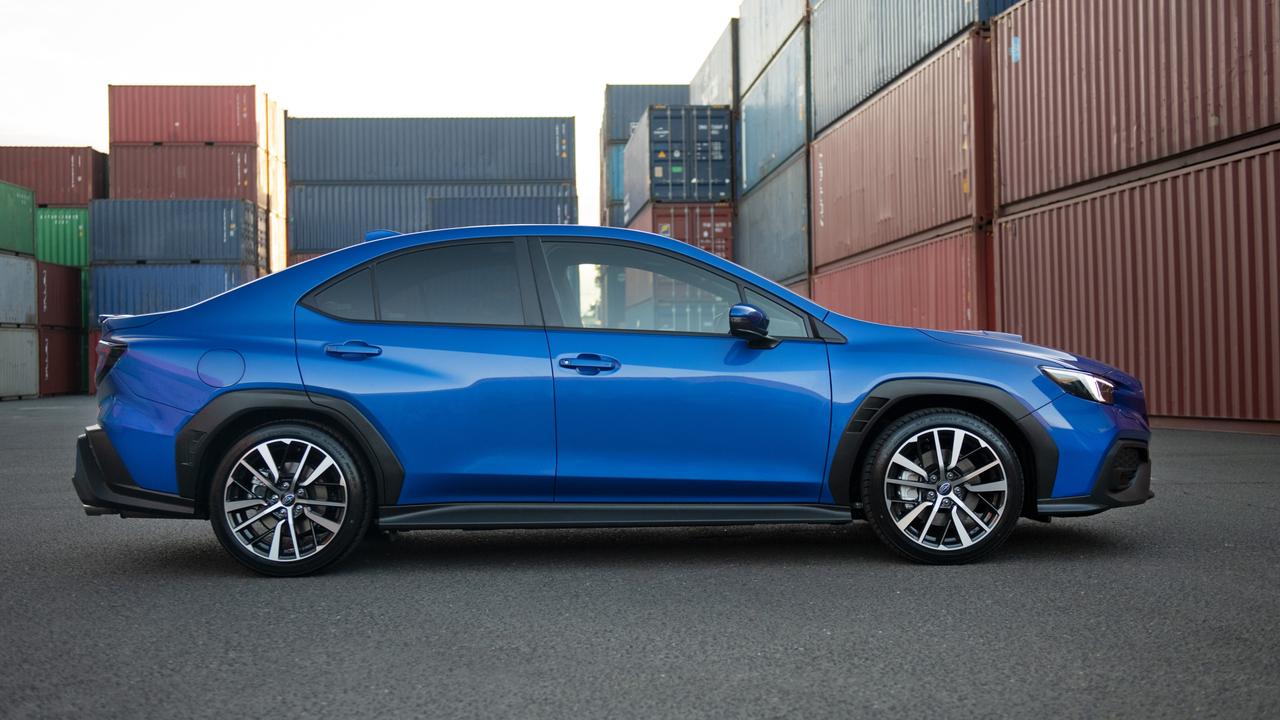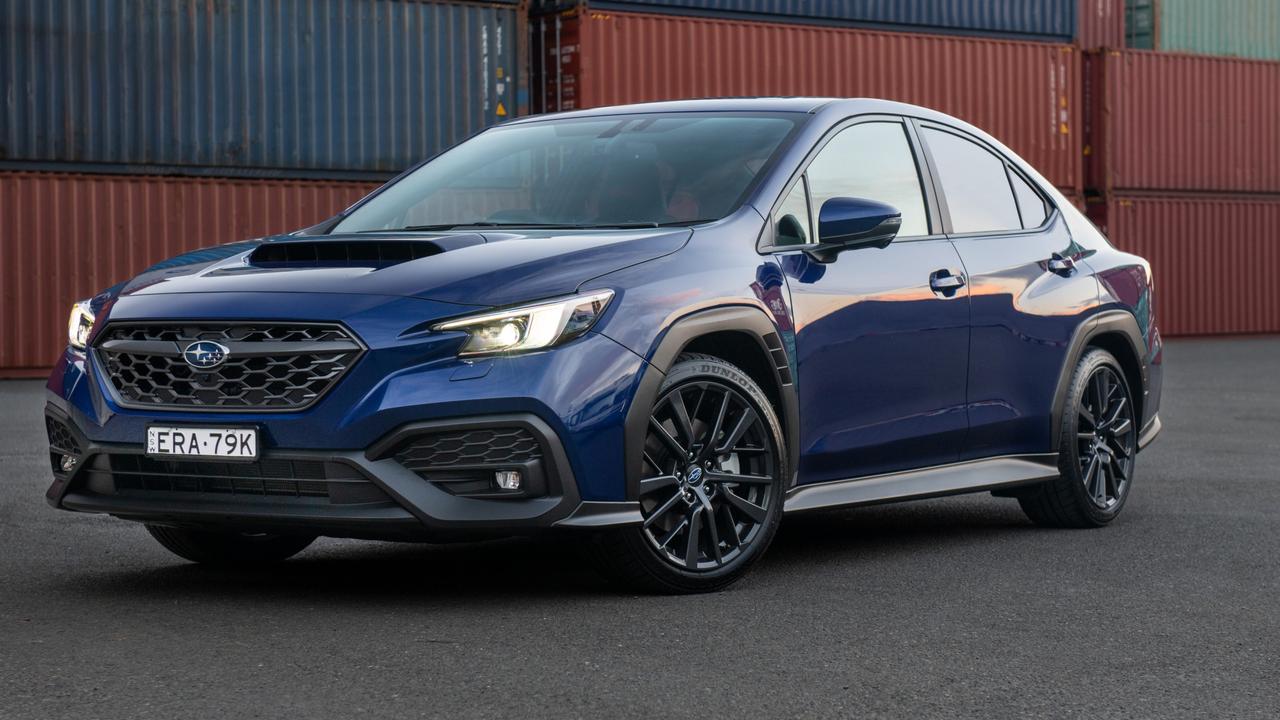2022 Subaru WRX manual review
Cars are getting very expensive, but this spicy new machine is a breath of fresh air with a price that’s barely changed in 25 years.
The Subaru WRX has been a smash hit in Australia for decades and now a new version has landed on our roads.
Here are five things you need to know about it.
Bang for your bucks
This is the fifth generation WRX. The original, launched in Australia in 1994, was hailed as a performance bargain at $39,990, so the new model’s starting price of $44,990 for the manual sedan, tested here, is still great value for money given the 28-year gap.

That’s despite a $4000 price rise over the 2021 equivalent. The truly bizarre thing, though, is that a 2021 base manual WRX sedan, which cost $40,990 new, is now according to Redbook worth $49,800 in good used condition – nearly $5000 more than the brand-new 2022 model.
Why is this so?
Subaru WRX fanboys are a pretty fickle lot, and although the 2022 WRX is new from the wheels up, including a much stronger, lighter body and a 2.4-litre turbocharged engine, Subaru has copped plenty of criticism for sacrificing the car’s signature rowdy, raucous, hoonmobile character in the name of greater space, refinement, comfort and safety.
If you’re not into doof doof, you don’t wear a hoodie in January and you’ve grown out of doing ram raid robberies for fun, you’ll find the new WRX much more appealing as an everyday drive. The police might even leave you alone.

Boxing On
The new 2.4 still uses Subaru’s horizontally opposed four-cylinder layout, matched in six-speed manual variants with a viscous-coupled limited-slip centre differential that distributes engine torque between the axles according to grip. A continuously variable automatic with eight “ratios” selected via paddle shifters, switchable drive modes and electronically controlled torque distribution, adds $4000.
The 2.4 turbo produces 202kW of power at 5600rpm and 350Nm of torque from 2000-5200rpm, compared with the previous 2.0-litre turbo’s 197kW at 5600rpm and 350Nm from 2400-5200rpm. So despite gaining an extra 20 per cent in capacity, outputs are little changed, as is acceleration.
Both models reach 100km/h from rest in a claimed 6.0 seconds.

The Throwback
If you’re unimpressed by 21st century PHD (Press Here, Dummy) digitally-driven cars that now use technology to take over roles once the responsibility of the driver, you’ll like the WRX manual, which feels like yesterday but in a good way.
There’s no lane-keep assist or adaptive cruise, no software-controlled adjustable driving modes, an old-fashioned lever handbrake, analog instruments and, of course, that stick between the seats, plus a third pedal that you manipulate to change gears. This car requires your full attention and some skill. In other words, it doesn’t drive you, you have to drive it.

Daily Driver
The 2.4 might lack the aural vaudeville of its predecessors, but that makes it easier to live with, especially in highway cruise mode where it’s smooth and silent. It’s also pretty flaccid below 3000rpm, though, with pronounced turbo lag in the intermediate and higher gears. The CVT option effectively overcomes this. The ride is softer than previously but still firm; the pay-off is superb handling. The previous WRX felt heroic in corners until pushed hard, then it turned to mush. This one doesn’t. It’s much better balanced, with less understeer. Steering is precise and tactile too. The test car’s brakes had been barbecued by another journo, so I can’t give you an accurate call on how it stops.
Overall, though, the WRX has now, after a 28-year adolescence, grown up. If you thought it was just for kids, have another look.





